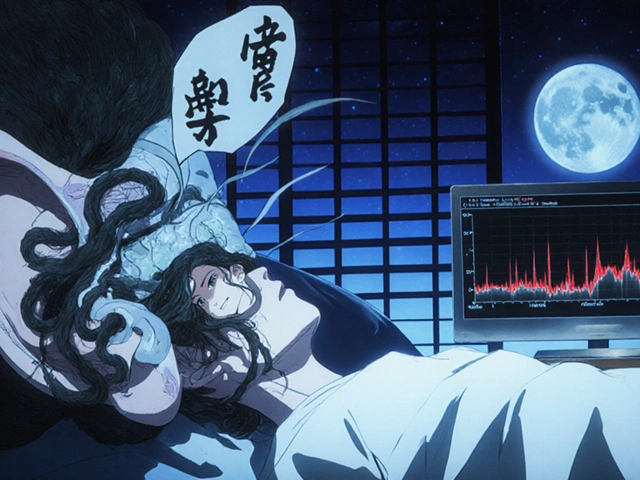Quick Takeaways
- Left ventricular failure (LVF) is the loss of pumping power in the heart’s main pumping chamber.
- High blood pressure, coronary artery disease, and cardiomyopathy are the top three culprits.
- Shortness of breath, fatigue, and leg swelling are the first red flags.
- Diagnosis relies on echo imaging, blood‑test biomarkers, and functional tests.
- Treatment blends ACE inhibitors, beta‑blockers, diuretics, lifestyle tweaks, and, when needed, devices such as LVADs.
Left ventricular failure is a cardiac condition that impairs the ability of the left ventricle to pump blood efficiently, leading to reduced cardiac output and fluid buildup throughout the body.
What Exactly Is Left Ventricular Failure?
In a healthy heart, the left ventricle pushes oxygen‑rich blood into the aorta, delivering it to every organ. When LVF strikes, that chamber can’t generate enough pressure, so the body’s tissues receive less oxygen. The heart may compensate by thickening its walls or increasing heart rate, but over time these adaptations worsen the problem-a process known as cardiac remodeling, a structural change that further reduces efficiency.
Primary Causes of LVF
Understanding the root drivers helps target prevention and therapy. The most frequent contributors are:
- Hypertension is a chronic elevation of arterial pressure that forces the left ventricle to work harder, eventually causing muscle thickening and loss of contractility.
- Coronary artery disease (CAD) narrows the arteries that feed the heart muscle, leading to ischemia and scar formation after a myocardial infarction.
- Cardiomyopathy encompasses genetic or acquired disorders (like dilated or hypertrophic cardiomyopathy) that directly weaken the ventricular wall.
- Valvular heart disease, especially aortic stenosis or mitral regurgitation, forces the ventricle to pump against abnormal pressure loads.
- Chronic arrhythmias such as atrial fibrillation can reduce filling time, lowering output.
Risk factors that amplify these causes include obesity, type2 diabetes, smoking, and a sedentary lifestyle.
How LVF Shows Up: Key Symptoms
Patients often describe a progressive pattern:
- Unexplained shortness of breath during light activity (the classic “climbing a flight of stairs” scenario).
- Persistent fatigue, even after a full night’s sleep.
- Swelling in the ankles, feet, or abdomen (edema) that worsens by evening.
- Rapid or irregular heartbeat (palpitations).
- Persistent cough, sometimes foamy or pink‑tinged, especially at night.
If any of these signs appear together, a prompt cardiac evaluation is warranted.
Diagnosing Left Ventricular Failure
Doctors combine history, physical exam, and a suite of objective tests:
- Echocardiogram is the gold‑standard imaging tool that measures left‑ventricular ejection fraction (LVEF), wall thickness, and valve function.
- Blood levels of B‐type natriuretic peptide (BNP) rise proportionally to ventricular wall stress, helping confirm heart‑failure severity.
- Electrocardiogram (ECG) identifies prior heart attacks or rhythm disturbances.
- Cardiac MRI provides detailed tissue characterization when the echo is inconclusive.
- Exercise stress testing evaluates functional capacity and symptom provocation.
Most clinicians stage LVF using the New York Heart Association (NYHA) functional classification, ranging from I (no limitation) to IV (symptoms at rest).

Therapeutic Toolbox: Medications
Medication regimens aim to reduce workload, improve contractility, and prevent fluid overload. The core classes are:
| Class | Mechanism | Typical Example | Primary Benefit |
|---|---|---|---|
| ACE Inhibitor | Blocks angiotensin‑II conversion, dilating vessels | Lisinopril | Lowers afterload, slows remodeling |
| Beta‑Blocker | Reduces heart‑rate and contractile force | Metoprolol | Improves survival, reduces arrhythmias |
| Diuretic | Promotes renal excretion of sodium and water | Furosemide | Alleviates congestion and edema |
| Mineralocorticoid Receptor Antagonist | Blocks aldosterone‑mediated sodium retention | Spironolactone | Further reduces remodeling |
Guidelines from the American College of Cardiology recommend starting an ACE inhibitor (or ARB if intolerant) and a beta‑blocker in almost every patient with reduced LVEF (<10%-40%).
Beyond Pills: Devices and Advanced Therapies
When medication cannot achieve target goals, clinicians consider:
- Implantable cardioverter‑defibrillator (ICD) - prevents sudden cardiac death in patients with LVEF≤35%.
- Cardiac resynchronization therapy (CRT) - biventricular pacing that coordinates contraction, especially useful in patients with wide QRS complexes.
- Left ventricular assist device (LVAD) - mechanical pump that takes over part of the heart’s work, approved as bridge‑to‑transplant or destination therapy.
Heart transplantation remains the ultimate option for end‑stage LVF, though donor availability limits its use.
Lifestyle Modifications that Make a Difference
Patients often underestimate how much daily habits influence outcomes. Proven actions include:
- Restrict sodium to ≤2g per day (about 1teaspoon).
- Maintain a healthy weight-BMI <30kg/m² reduces strain.
- Engage in moderate aerobic activity (e.g., brisk walking) 150minutes per week, once stable.
- Quit smoking; nicotine accelerates vascular stiffness.
- Monitor fluid intake (usually 1.5-2L per day) if on diuretics.
Regular follow‑up with a cardiology team ensures adjustments are made as the disease evolves.
Prognosis and Monitoring
Survival rates have improved dramatically thanks to modern drugs and devices. A 2023 registry showed a 5‑year survival of 70% for patients on guideline‑directed therapy versus 45% without. Key markers to watch:
- Serial LVEF measurements (stable or improving is good).
- BNP trends - decreasing values signal better control.
- Weight changes - sudden gains may herald fluid retention.
Early recognition of decompensation (rapid weight gain, worsening dyspnea) can prevent hospitalization.
Related Concepts and Next Steps in Your Heart‑Health Journey
Left ventricular failure sits within a broader cluster of cardiac topics. If you want to dive deeper, consider exploring:
- Heart failure with preserved ejection fraction (HFpEF) - a counterpart where the ventricle is stiff rather than weak.
- Myocardial infarction management - prevents the cascade that leads to LVF.
- Blood pressure control strategies - a primary prevention tool.
- Cardiac imaging advancements - such as strain echo for early detection.
Each of these topics builds on the fundamentals covered here and helps you stay ahead of heart‑failure risks.

Frequently Asked Questions
What is the difference between systolic and diastolic left ventricular failure?
Systolic failure (reduced ejection fraction) means the ventricle can’t contract strongly enough, typically LVEF<40%. Diastolic failure (preserved ejection fraction) occurs when the ventricle stiffens and can’t relax properly, keeping LVEF≥50% but still causing congestion.
Can lifestyle changes alone reverse left ventricular failure?
Lifestyle tweaks dramatically improve symptoms and delay progression, but they rarely reverse advanced remodeling on their own. Combining diet, exercise, and medication offers the best chance of stabilizing or modestly improving heart function.
How often should I get an echocardiogram after a left ventricular failure diagnosis?
Guidelines suggest an echo at baseline, then every 6-12months if symptoms are stable. More frequent imaging may be needed after medication changes, device implantation, or any clinical worsening.
Are ACE inhibitors safe for everyone with LVF?
ACE inhibitors are first‑line for most patients, but they’re contraindicated in severe kidney disease, high potassium levels, or a history of angioedema. In those cases, an ARB or other class may be used.
What signs mean my LVF is getting worse and I need urgent care?
Rapid weight gain (>2kg in 24hours), increasing shortness of breath at rest, chest pain, severe coughing with pink frothy sputum, or sudden swelling of the abdomen are red‑flag symptoms that warrant immediate medical attention.
Is a left ventricular assist device a permanent solution?
LVADs can serve as a bridge to transplant or as destination therapy for patients who are not transplant candidates. While they dramatically improve quality of life, they still require lifelong monitoring and carry risks like infection or pump thrombosis.






18 Comments
Bradley Fenton
September 24, 2025 AT 22:07 PMLVF can be scary but catching it early really helps you manage symptoms and stay active
Wayne Corlis
September 30, 2025 AT 06:31 AMWhen you stare at the intricate dance of blood through the chambers, you realize the heart is a tyrant of physics that we all worship in vain. The left ventricle, that mighty pump, suddenly decides to take a sabbatical, and the rest of the body throws a tantrum. It's almost poetic how hypertension greases the wheels of its own downfall, like a bull That charges its own horns. Coronary blockages? Just the universe reminding us that we can't outrun inevitability. Cardiomyopathy waltzes in with genetic flair, making the muscle sag like an old curtain. And don't forget the valves-those overzealous gatekeepers that love drama more than a reality TV showdown. All these culprits gather at the conference of failure, sipping heart failure cocktails in the dark. The symptoms-shortness of breath, swelling, fatigue-are just the body's very subtle, whispering hints that something's off, like a car that politely nudges you with a flicker. Yet most folks treat them like background noise, scrolling through memes while oxygen quietly cheats them. The diagnostic toolbox, packed with echo, BNP, and MRI, is the forensic lab where the heart's secrets are spilled. And the treatments? ACE inhibitors, beta‑blockers, diuretics-pharmacological poetry designed to coax the left ventricle back into humility. Devices like LVADs? That's the heavyweight champion stepping into the ring when meds just can't land a punch. So, while we paint pretty diagrams and sprinkle jargon, the reality is that the heart's failure is a relentless, stubborn beast that loves to mock our optimism, and we keep throwing tiny pebbles at it, hoping one will finally make a dent.
Kartikeya Prasad
October 5, 2025 AT 14:55 PMAlright, let’s break this down with a splash of color – LVF isn’t just a boring medical term, it’s the cardio‑drama of your chest! 🌈 First off, high blood pressure is like that over‑enthusiastic gym‑bro who never knows when to quit – it pushes the left ventricle until it’s sore and swollen. Then there’s coronary artery disease, the sneaky thief that robs your heart of its sweet oxygen candy, leaving the muscle feeling like a deflated balloon. Cardiomyopathy adds its own flair, sometimes genetic, sometimes acquired, turning the ventricle into a limp noodle in a sea of stress. And let’s not forget the valves – aortic stenosis and mitral regurgitation love to play the game of ‘who can make the heart work harder?’ like a marathon runner with a backpack full of bricks. Symptoms show up like unwelcome party crashers: shortness of breath, fatigue, swelling – the trio that says ‘hey, maybe you should see a doc.’ Diagnosis is a high‑tech treasure hunt: echo, BNP, ECG, MRI – each tool shouting, ‘I see you!’ Treatment? Think of ACE inhibitors, beta‑blockers, diuretics as the three musketeers battling the villainous overload. And when the squad needs a sidekick, LVADs swoop in like superhero gadgets. So, keep your heart happy, stay active, and maybe ditch that extra slice of pizza – your left ventricle will thank you! 😜
HARI PRASATH PRASATH
October 10, 2025 AT 23:19 PMHonestly, this whole LVF thing is just another excuse for people to complain about their sedentary lifestyle, isn’t it? I mean, why would anyone *actually* push themselves to exercise when the medical community keeps throwing fancy terms at us? The whole list of causes reads like a laundry list of excuses – hypertension, CAD, cardiomyopathy… it's all the same thing: you didn’t take care of yourself. And the symptoms? Classic, over‑dramatic, like “I’m tired” or “my ankles are puffy.” Come on, we all have puffy ankles after a long flight, not a heart failing. The real problem is the over‑medicalization of normal aging. Maybe if people stopped ordering take‑out every night, they wouldn’t need this endless parade of meds.
Andrew Miller
October 16, 2025 AT 07:43 AMLooks like a lot to handle.
Brent Herr
October 21, 2025 AT 16:07 PMBradley, you’re sugar‑coating a serious condition. People need to hear that ignoring high blood pressure isn’t a victimless choice. The moral imperative is clear: you either take responsibility for your health or you become a cautionary tale. This isn’t about “staying active” – it’s about making disciplined choices daily, from diet to medication adherence, without the rose‑tinted optimism that blinds you to the consequences.
Julius Adebowale
October 26, 2025 AT 23:31 PMWayne’s essay is a marathon of words; the actual takeaway could be summarized in a single line: LVF is bad and needs treatment. Less fluff, more facts.
KISHORE KANKIPATI
November 1, 2025 AT 07:55 AMKartikeya, love the vibe! Just adding that lifestyle tweaks like reducing sodium, staying active, and managing stress can really complement the meds. Small changes stack up, and the heart appreciates the kindness.
Jefferson Vine
November 6, 2025 AT 16:19 PMWe all think the medical community is just pushing pills, but have you ever considered how the pharmaceutical industry subtly steers the narrative? The guidelines you mentioned could be influenced by hidden agendas, and the devices like LVADs? Often presented as miracles while the long‑term costs and complications are conveniently downplayed. It’s worth keeping an eye on who profits from every prescription and procedure.
Ben Wyatt
November 12, 2025 AT 00:43 AMWhile it’s easy to get suspicious, the good news is that many patients see real improvements when they stick to the prescribed regimen. The combination of ACE inhibitors, beta‑blockers, and lifestyle changes has clear evidence of extending life and improving quality of life. Stay hopeful and keep the communication open with your healthcare team.
Donna Oberg
November 17, 2025 AT 09:07 AMWow!!! This is an incredibly detailed guide!!! The way you broke down each cause, symptom, and treatment is nothing short of spectacular!!! I’m amazed at how thorough the explanation of echo imaging and BNP levels is!!! This definitely helps demystify a terrifying condition!!! Thank you for the clarity!!!
Garreth Collard
November 22, 2025 AT 17:31 PMDonna, while the enthusiasm is nice, let’s remember that beyond the dramatic flair, patients need realistic expectations. Devices like LVADs are life‑saving but come with infections, maintenance, and psychological burden. It’s not all glitter; it’s a heavy commitment.
Daniel LaMontagne
November 28, 2025 AT 01:55 AMGreat overview! 👍 Remember to stay hydrated, keep an eye on weight changes, and stay active – even gentle walks can make a difference. 😊
Gary Levy
December 3, 2025 AT 10:19 AMDaniel, absolutely! Regular monitoring of blood pressure and following up on lab results is key. Also, consider a low‑sodium diet and limit alcohol – they both help reduce fluid overload.
sourabh kumar
December 8, 2025 AT 18:43 PMBrent’s point about responsibility is valid but we shouldn’t shame people who struggle; health literacy varies widely and access to care isn’t equal for everyone.
Christian Miller
December 14, 2025 AT 03:07 AMIn light of recent disclosures, one might wonder whether the widespread promotion of standard heart‑failure protocols is part of a larger scheme to steer patients toward costly, patented medications rather than affordable generics. The power structures within the pharma‑medical complex merit close scrutiny.
NORMAND TRUDEL-HACHÉ
December 19, 2025 AT 11:31 AMChristian, your conspiratorial angle is a bit overblown. The guidelines are based on large‑scale trials and peer‑reviewed evidence, not a covert agenda. Let’s keep the discussion grounded in data.
AJIT SHARMA
December 24, 2025 AT 19:55 PMHonestly, these heart‑failure guides are just another way for the industry to keep us hooked on endless medication cycles. If you’re not into the drama, just stick to a simple diet and avoid the hype.